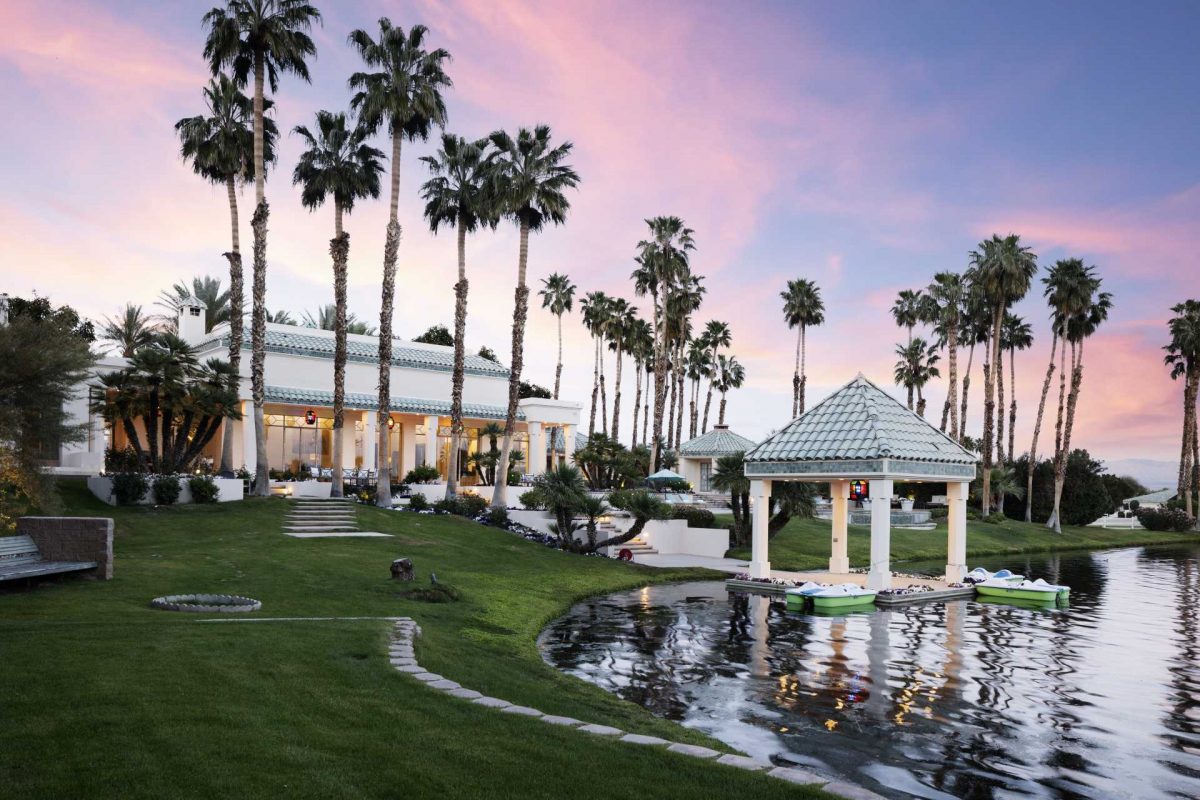Buildings are often built in reaction to neighborhood requirements, yet the cast-iron palaces that characterize the Flatiron district created their own business and clientele.
The tract of land now defined as the Flatiron district originated as swamp land that was eventually utilized as a Potters field in the 1700’s by colonists. In 1807, the American army used a section of land that would eventually be the Madison Square park as a drill field, barracks, and weapons arsenal.
As the city continued to grow, more and more visitors would travel through the north passage to the tip of the island. Their first introduction to the city was a barren field with a single cottage welcoming them to the heralded city, named Madison cottage after the fourth President, James Madison.
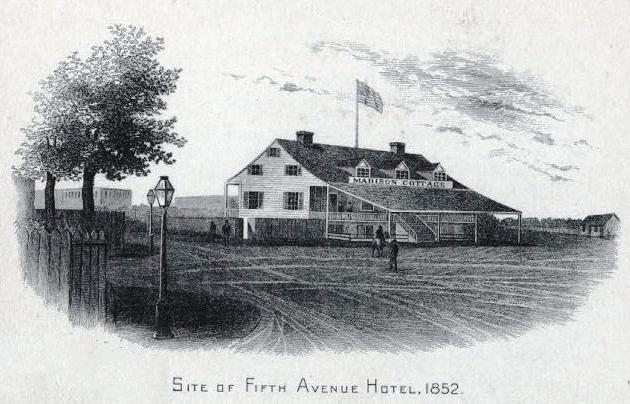 PC: New York Public Library Digital Collections
PC: New York Public Library Digital Collections
The empty fields eventually attracted commercial investors, but before then a volunteer fireman and his fellow firefighters from the Knickerbockers invented and played the first games of baseball on the fields.
Cartwright, the official inventor of baseball, determined the official rules on September 23, 1945, and played the first game 9 months later against another firefighter team, the New York Nine. The first game resulted in a 23 to 1 loss for the Knickerbockers, yet the players were not discouraged and continued to play with rules, umpires, and a 6 cent fine for foul language uttered on the field.
In 1847, the official Madison Square Park opened (continuing the name from the cottage) and baseball games had to be moved to Hoboken, yet the park continued to attract many new residents desiring a peaceful reserve.
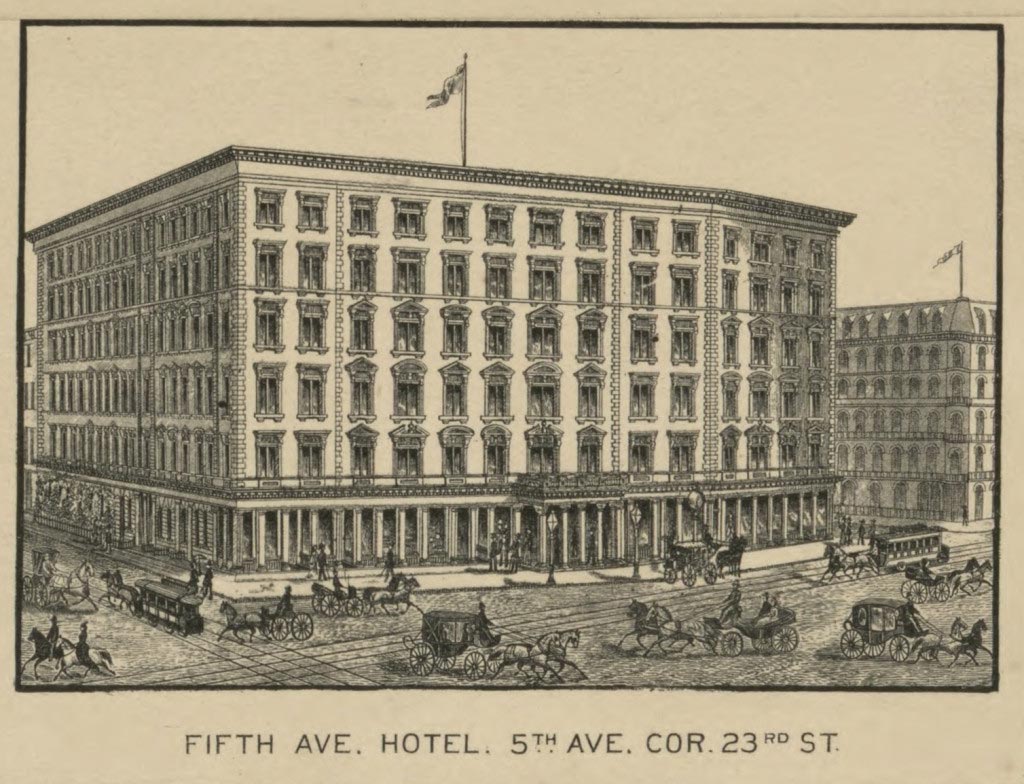 PC: Library of Congress
PC: Library of Congress
After Madison Square Park opened, an ambitious hotel owner decided to build the tallest hotel outside of the hotel district, miles away from the center of downtown. The Fifth Avenue Hotel was built by Amos Eno on the very site where the Madison Cottage had welcomed visitors for years.
Many contemporary peers laughed at Eno, believing his hotel would never receive many visitors. Yet, the innovative design incorporated the first elevators (known as vertical railways) that allowed visitors to stay on the higher floors without climbing flights of stairs. The radical design and location of Eno’s hotel enticed visitors from around the world and motivated other hotels and entertainment to move to the Flatiron District.
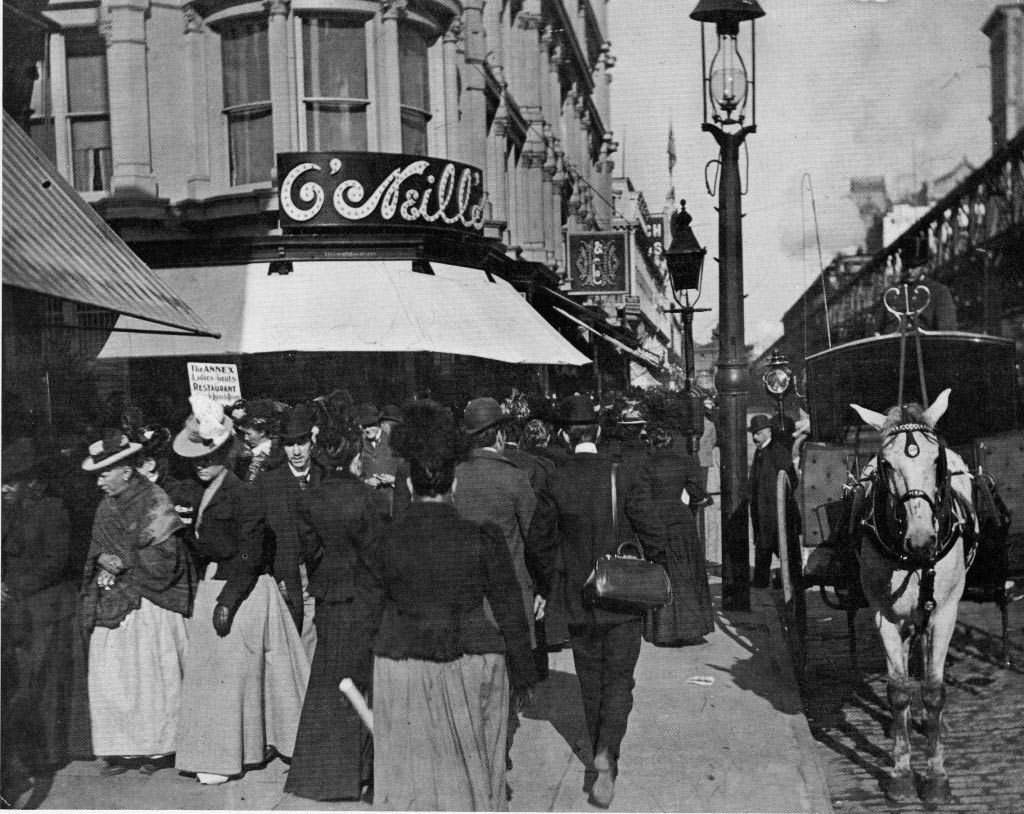 PC: Ephemeral New York
PC: Ephemeral New York
As popular guests, such as the Prince of Wales, inhabited the Fifth Avenue Hotel, brownstones, mansions, shops, and clubs grew to support such a clientele. Famous department stores moved into soaring cast-iron buildings and the 6th avenue train brought clients for the shopping experience.
From the Civil War to World War I, women could shop safely in the crowded streets and display their own finery as they shopped the latest designs. The shops created the Ladies Mile until the Great Depression when stores moved uptown and residents vacated the expensive brownstones and mansions circling the park.
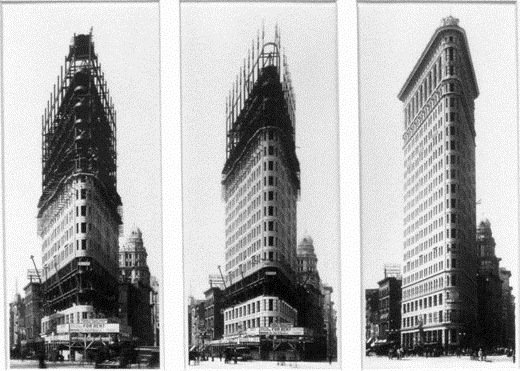 PC: Library of Congress
PC: Library of Congress
The abandoned district had a savior in its namesake: the Flatiron building. The flatiron building had been built in a few years for George A Fuller by architect Daniel Burnham in 1902. The wedge-shaped space between the streets was already nicknamed the flatiron, for its clothing-iron shape.
Controversy surrounded the building as many critics thought the shape was ugly and an eyesore. Furthermore, it was believed the building was structurally unsound and that strong winds would collapse it. The right triangle shape confused many bystanders, as at one angle it would appear to be a normal square building, yet at another, it looked like a large steamship blazing through New York. At only 6 feet wide at its narrow end, the Flatiron building attracted many visitors and lots of press pieces which eventually defined the construction as a New York symbol.
After the Great Depression, this symbol cult status eventually attracted more businesses to the area. Toy shops filled the previously empty large, open buildings and when toy companies shifted overseas, photography industries scooped up the light-filled spaces and cheap rents. Currently, shops and art museums mingle with start-up technology companies in the Flatiron District.



